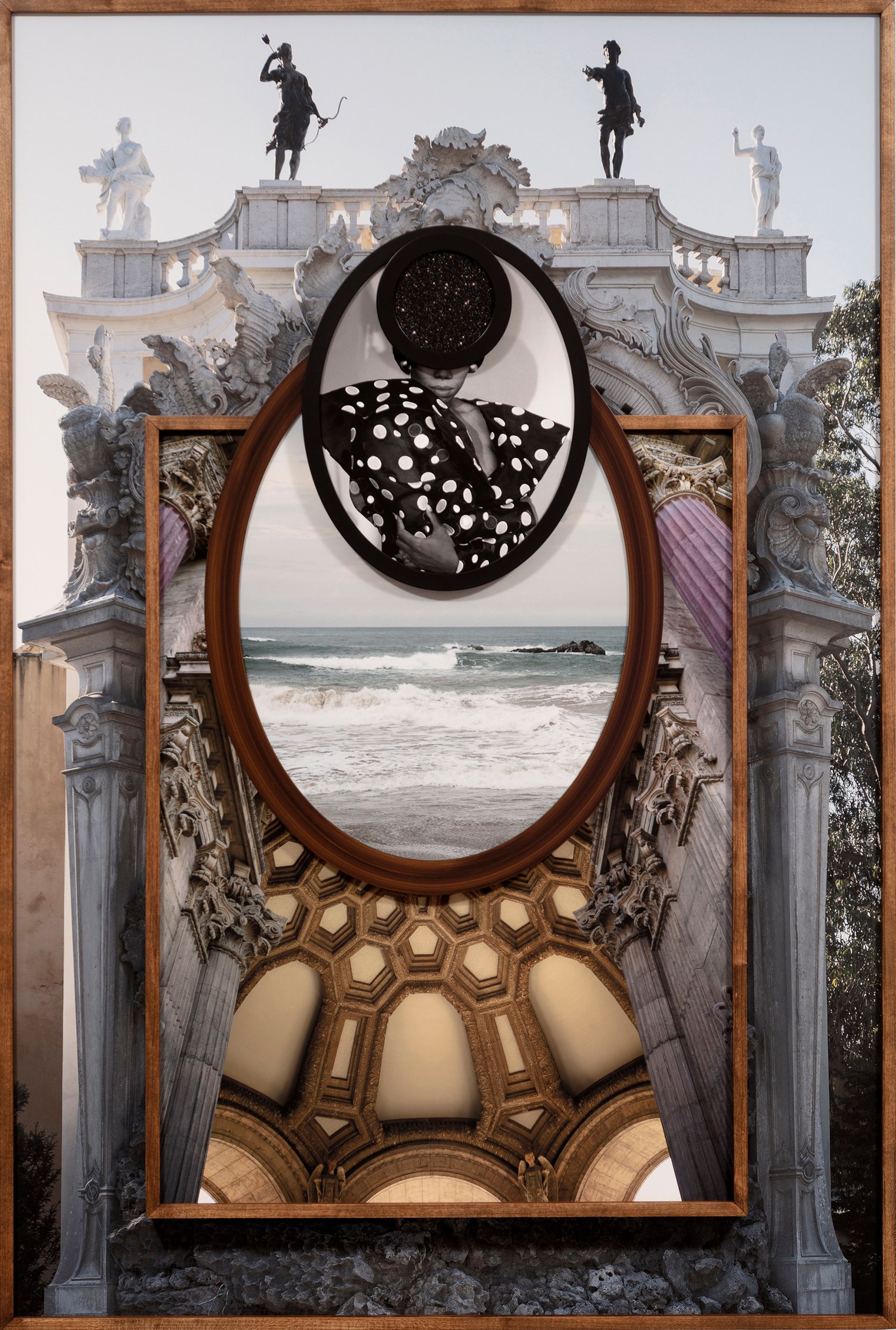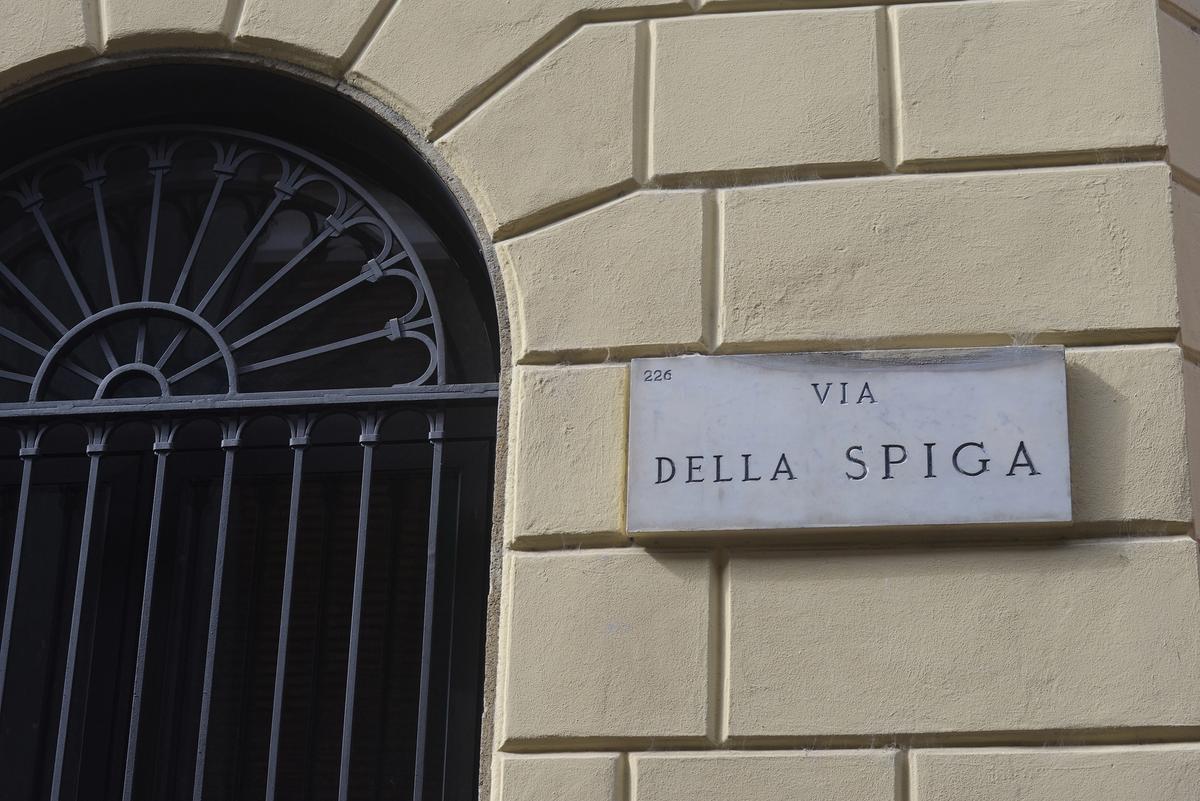Lehmann Maupin, the highly regarded international contemporary art gallery, will open a new seasonal pop-up space in Milan this month, as the brand seeks to capitalise on footfall and excitement from art fairs, major exhibitions and the Venice Biennale to make inroads into the Italian market.
The venture will be housed at Circolo, a non-profit art platform inaugurated last autumn on Via della Spiga, a chic thoroughfare crossing Milan’s upmarket fashion district. Scheduled to operate from 12 April until 21 June, the pop-up will host a group exhibition featuring new works by Nari Ward, Hernan Bas, Mandy El-Sayegh and other artists from the gallery’s programme.
Lehmann Maupin’s leadership believes the temporary exhibition venue could aid the gallery in strengthening its intercontinental base. “Milan has really become a European hub,” David Maupin, the co-founder of the gallery, tells The Art Newspaper. “It is a great location as an entry point into Europe.”

Todd Gray’s 2022 work Atlantic (Keisha’s Redemption Song). The US artist, who undertook a residency in Rome last year, will be showing at the pop-up Courtesy of the artist and Lehmann Maupin
Established in New York by Maupin and Rachel Lehmann in 1996, Lehmann Maupin now encompasses permanent locations in New York, Seoul and London, and has team members based in Hong Kong, Shanghai, Singapore and Palm Beach. The gallery has previously opened seasonal spaces in Aspen, Beijing, Palm Beach and Taipei.
Milan’s moment
The gallery’s Milan pop-up is the latest indicator of the city’s steady growth as a European destination for contemporary art. Major non-profit exhibition spaces such as Pirelli HangarBicocca and the Fondazione Prada have opened there in the last 20 years. On the commercial side, respected Italian contemporary dealerships including Cardi Gallery, Kaufmann Repetto and Massimo De Carlo maintain their headquarters in Milan, while international galleries including Lisson and Cadogan launched local branches in 2011 and 2023, respectively. (Lisson closed its location in the city in 2017.)
“Milan has changed so much over the last few years,” Maupin says. “I first went there 25 years ago, and it’s just totally a different arrangement now. Everyone loves it.”
Helmed by Lehmann Maupin partner Jessica Kreps, the pop-up will sync its opening with various Milanese cultural highlights in mid-April, including Miart, Italy’s most prestigious contemporary art fair, and the flagship Salone del Mobile design fair. A retrospective on the work of Ward, one of the most celebrated artists in the gallery’s programme, debuted at HangarBicocca on 28 March and runs until 28 July. The Venice Biennale, which opens on 20 April and features Lehmann Maupin artist Kim Yun Shin in its central exhibition, is also just two and a half hours away by train, leading Maupin to predict that many visitors will pass through Milan as well.
The pop-up show will be presented across three rooms at Circolo, which was founded by the European collector and consultant Nicole Saikalis Bay to showcase emerging and established artists, host events and facilitate visitor engagement with the art community. One room will temporarily house focused solo displays of two artists: Ward in the first month, and the American photo-based artist Todd Gray in the second. Other highlights will include new works by Billy Childish and Alex Prager.
While Gray, who completed a residency at the American Academy in Rome in 2023, and Ward are well-established in Italy, the exhibition also aims to build the regional profiles of artists who have had more limited exposure in the country—for example, Lee Bul, who showed in the Venice Biennale’s international exhibition in 2019—as well as newcomers like the young abstract painter Loriel Beltrán, Kreps says.
Still, she acknowledges sales could be slower in Milan than in other pop-ups. “I think anyone will tell you that the tempo is a little more measured in Europe than in the United States, so the fact we have a two-month runway will allow us to develop a dialogue with collectors.”
When opportunity knocks, pop up
Lehmann Maupin’s embrace of the pop-up model has considerably broadened its reach without the burden of committing to a long-term lease in every new locale where opportunity has arisen. The firm aims to launch a new temporary location on London’s Cork Street in the coming months.
Maupin says that decisions about where to site the gallery’s temporary spaces have depended on various factors, including where its artists, clients, staff and partner museums have been located at key moments. But in his telling, the strategy has been driven by creative considerations above all, with the operational benefits being a bonus.
“Ultimately, our goal is to present new contexts for audiences to view our artists’ work, and this approach enables us to have more flexibility,” Maupin says. “Our experimentation with pop-ups has been driven primarily by our artists’ curiosity to examine new geographies and their excitement to respond to different architectural spaces and audiences. Our artists are always at the forefront of everything that we do, and we’ve seen that these projects really motivate them.”
Maupin adds that his personal connections with Italy—he studied in Florence during his university year abroad, and interned at Venice’s Guggenheim Museum—make the country a “second home” for him. Asked whether the gallery would one day open a permanent site there, he says: “I would love that. Let’s see what happens. It won’t happen tomorrow, but it may in the long term.”


